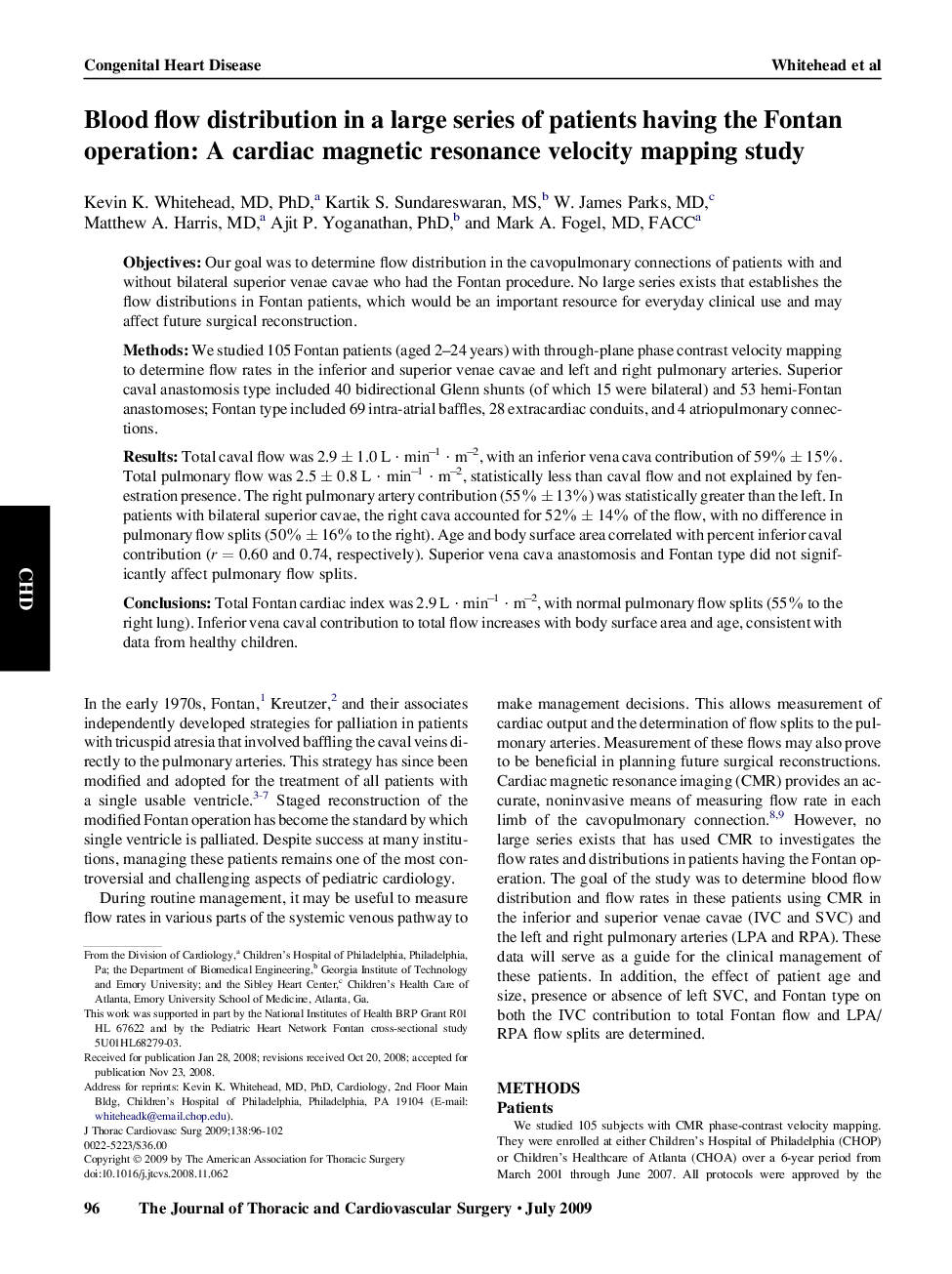| Article ID | Journal | Published Year | Pages | File Type |
|---|---|---|---|---|
| 5992587 | The Journal of Thoracic and Cardiovascular Surgery | 2009 | 7 Pages |
ObjectivesOur goal was to determine flow distribution in the cavopulmonary connections of patients with and without bilateral superior venae cavae who had the Fontan procedure. No large series exists that establishes the flow distributions in Fontan patients, which would be an important resource for everyday clinical use and may affect future surgical reconstruction.MethodsWe studied 105 Fontan patients (aged 2-24 years) with through-plane phase contrast velocity mapping to determine flow rates in the inferior and superior venae cavae and left and right pulmonary arteries. Superior caval anastomosis type included 40 bidirectional Glenn shunts (of which 15 were bilateral) and 53 hemi-Fontan anastomoses; Fontan type included 69 intra-atrial baffles, 28 extracardiac conduits, and 4 atriopulmonary connections.ResultsTotal caval flow was 2.9 ± 1.0 L · minâ1 · mâ2, with an inferior vena cava contribution of 59% ± 15%. Total pulmonary flow was 2.5 ± 0.8 L · minâ1 · mâ2, statistically less than caval flow and not explained by fenestration presence. The right pulmonary artery contribution (55% ± 13%) was statistically greater than the left. In patients with bilateral superior cavae, the right cava accounted for 52% ± 14% of the flow, with no difference in pulmonary flow splits (50% ± 16% to the right). Age and body surface area correlated with percent inferior caval contribution (r = 0.60 and 0.74, respectively). Superior vena cava anastomosis and Fontan type did not significantly affect pulmonary flow splits.ConclusionsTotal Fontan cardiac index was 2.9 L · minâ1 · mâ2, with normal pulmonary flow splits (55% to the right lung). Inferior vena caval contribution to total flow increases with body surface area and age, consistent with data from healthy children.
